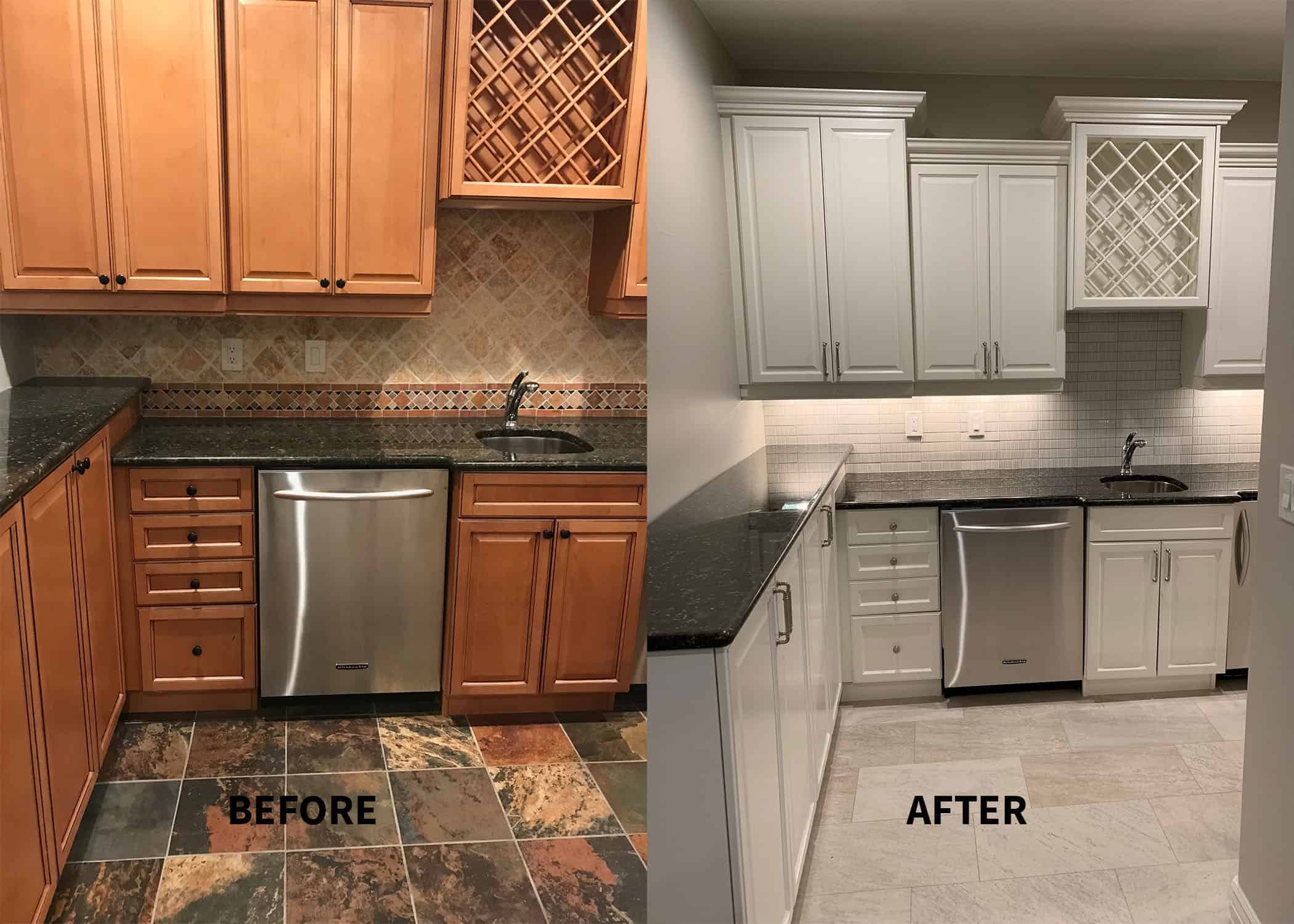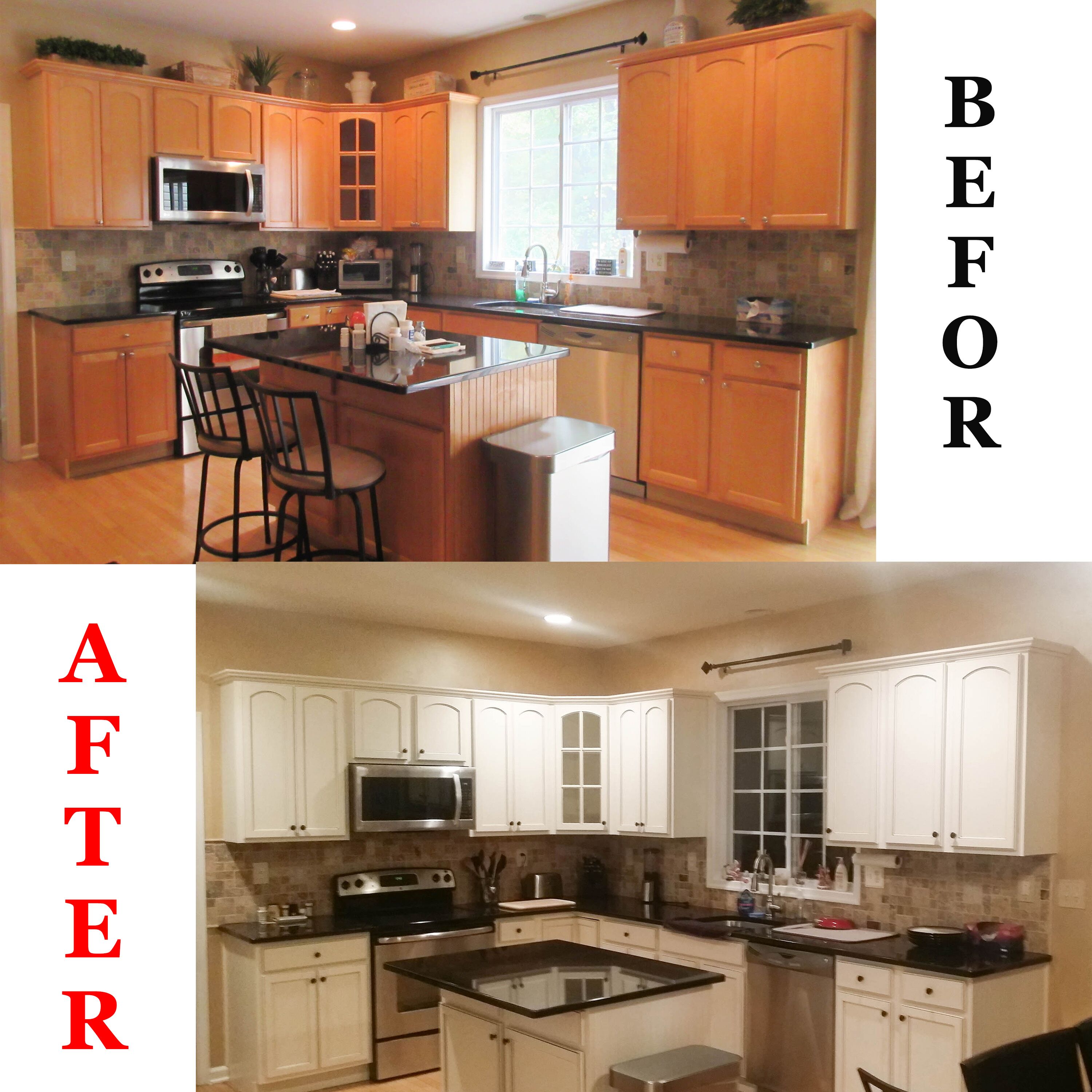Cabinet Cleaning Solutions for Painting

So, you’re ready to paint your cabinets, huh? Fantastic! But before you unleash your inner Bob Ross on those kitchen doors, let’s talk about the elephant in the room (or should I say, the grease on the cabinet): cleaning. Proper cleaning is the key to a smooth, long-lasting paint job. Think of it as prepping for a high-stakes beauty pageant – you wouldn’t go on stage without a thorough cleansing, would you?
TSP, Trisodium Phosphate, and Degreasers: A Cleaning Showdown
Let’s face it, kitchen cabinets see some action. Grease splatters, sticky fingerprints, the lingering aroma of last night’s questionable culinary experiment – it’s a battlefield out there. TSP (trisodium phosphate), degreasers, and other heavy-duty cleaners are your weapons of choice. TSP is a powerful cleaner that cuts through grease like a hot knife through butter (but please, don’t actually try that). It’s effective but requires careful handling due to its caustic nature – always wear gloves and eye protection, and ensure adequate ventilation. Application involves mixing TSP according to package directions with warm water, applying the solution with a sponge or cloth, scrubbing thoroughly, and rinsing meticulously. Degreasers, on the other hand, come in various forms (sprays, liquids) and offer a gentler approach, though possibly less effective on stubborn grime. Application usually involves spraying the degreaser onto the cabinets, letting it dwell for a few minutes, scrubbing, and rinsing. The choice between TSP and a degreaser depends on the level of grime and your personal comfort level with strong chemicals. Remember, safety first!
Baking Soda and Water: The Eco-Friendly Approach
For those seeking a more natural and budget-friendly option, a simple mixture of baking soda and water is a surprisingly effective cleaner. Think of it as the environmentally conscious superhero of cabinet cleaning. Mix a paste of baking soda and water, apply it to the cabinets, scrub gently with a soft sponge or cloth, and rinse thoroughly. While it might not tackle the most stubborn grease as effectively as TSP, it’s a great option for lighter cleaning or as a pre-treatment before using a stronger cleaner.
| Method | Cost-Effectiveness | Environmental Impact | Effectiveness |
|---|---|---|---|
| Baking Soda & Water | Very High | Low | Moderate |
| Commercial Cleaners (e.g., TSP, Degreasers) | Moderate to High | Moderate to High | High |
Specialized Cabinet Cleaning Wipes and Sprays: A Convenience Conundrum
Let’s explore the world of pre-packaged convenience. Cabinet cleaning wipes and sprays offer a quick and easy solution, but are they worth the extra cost?
- Wipes: Pros: Convenient, disposable, often contain disinfecting agents. Cons: Can be expensive per square foot cleaned, may not be effective on heavy grease, generate waste.
- Sprays: Pros: Often more cost-effective than wipes, can be used on larger areas. Cons: Require separate cloths or sponges, may not be as effective on stubborn grime.
| Brand | Type | Pros | Cons |
|---|---|---|---|
| Brand A | Spray | Good for light cleaning, pleasant scent | Not effective on heavy grease |
| Brand B | Wipes | Convenient for quick cleanups | Expensive, can dry out quickly |
| Brand C | Spray | Powerful degreasing action | Strong odor, requires good ventilation |
| Brand D | Wipes | Eco-friendly formula | Less effective than chemical-based options |
Preparing Cabinets for Paint
So, you’ve bravely wrestled your cabinets into submission, banished the grime, and now stand poised to unleash the power of paint. But hold your horses, Picasso! Before you even think about wielding a brush, there’s a crucial step that separates the amateur from the artisan: surface preparation. Think of it as the foundation of a magnificent house – if it’s shaky, the whole thing’s going to crumble (or at least look terribly unprofessional).
Sanding Techniques for Cabinet Surfaces
Sanding is your secret weapon against uneven surfaces and stubborn old finishes. It’s like giving your cabinets a spa day, but instead of cucumber masks, we’re using sandpaper. The choice between wet and dry sanding depends on the material and the level of smoothness you desire. Dry sanding is faster for removing larger imperfections on sturdy wood, but wet sanding, using water as a lubricant, creates a smoother, dust-free finish, particularly beneficial for delicate materials like veneer or melamine. Imagine dry sanding as a rough-and-tumble workout, and wet sanding as a gentle yoga session for your cabinets.
Repairing Common Cabinet Surface Imperfections
Let’s face it, cabinets aren’t immune to the wear and tear of life. Scratches, dents, and even water damage can leave your beautiful project looking like it lost a fight with a rabid squirrel. But fear not! For minor scratches, a little wood filler, carefully applied and sanded smooth, will work wonders. For deeper dents, you might need to use a wood putty, ensuring a perfect match to your cabinet’s color. Water damage, however, is a more serious beast. This often requires more extensive repair, possibly involving replacing damaged sections. Think of it as a cabinet-sized surgical procedure. For smaller water-damaged areas, after careful removal of the affected area, a wood epoxy resin can be used to fill the gaps and create a stable base.
Step-by-Step Guide to Cabinet Surface Preparation, What to use to clean cabinets before painting
Before we begin, let’s get one thing straight: safety first! This isn’t a game of “Pin the Tail on the Donkey,” so take precautions.
Always wear appropriate safety gear, including safety glasses, a dust mask (especially during sanding), and gloves. Proper ventilation is also crucial, especially when working with solvents or paints.
Now, let’s get down to business:
- Clean the Cabinets: Thoroughly clean your cabinets using the appropriate cleaning solution. Remember to allow ample drying time.
- Sanding Time: Using the appropriate grit sandpaper (start with a coarser grit for significant imperfections and gradually move to finer grits for a smooth finish), sand all surfaces evenly. Remember to sand with the grain of the wood.
- Fill Imperfections: Apply wood filler or putty to any dents or scratches, allowing it to dry completely before sanding smooth.
- Prime Time: Apply a high-quality primer designed for cabinets. This creates an even surface for the paint to adhere to, preventing blotchiness and ensuring a professional finish. Allow the primer to dry completely before painting.
Advanced Cleaning and Surface Treatment: What To Use To Clean Cabinets Before Painting

Let’s face it, your cabinets probably haven’t seen this much attention since that disastrous Thanksgiving dinner incident involving Aunt Mildred’s cranberry sauce explosion. Before we unleash the paint, we need to tackle those stubborn stains and grimy bits that are clinging on for dear life. Think of this as a pre-paint spa day for your cabinets – they deserve it!
Stubborn Stain Removal Techniques
This table Artikels effective methods for removing various stubborn stains from different cabinet materials. Remember, always test any cleaning solution on an inconspicuous area first to avoid unintended consequences (like accidentally removing the entire cabinet finish!). We’re aiming for a pristine surface, not a cabinet-shaped hole in your wall.
| Stain Type | Cabinet Material | Cleaning Solution | Application Method |
|---|---|---|---|
| Grease | Wood | TSP (trisodium phosphate) solution (follow product instructions carefully!) | Apply with a soft sponge, scrub gently, rinse thoroughly with clean water. |
| Grease | Laminate/Melamine | Mild dish soap and water solution | Apply with a soft cloth, wipe clean, rinse with clean water. |
| Sticky Residue | Wood | Denatured alcohol (test in an inconspicuous area first!) | Apply with a soft cloth, gently rub, wipe clean. |
| Sticky Residue | Laminate/Melamine | Baking soda paste (mix with water to form a paste) | Apply paste, let it sit for a few minutes, scrub gently, wipe clean. |
| Watermarks | Wood | Fine-grit sandpaper (followed by wood conditioner) | Sand gently in the direction of the wood grain, apply wood conditioner to restore moisture. |
| Watermarks | Laminate/Melamine | Magic Eraser (melamine foam) | Gently rub the affected area with a dampened Magic Eraser. |
Mold and Mildew Remediation
Mold and mildew are not just unsightly; they can also be health hazards. Ignoring them before painting is like ignoring a tiny crack in your foundation – it’ll only get worse. Before you even think about grabbing a paintbrush, you need to eradicate these unwelcome guests.
Dealing with mold and mildew requires a multi-pronged approach. First, thoroughly clean the affected area with a solution of one part bleach to ten parts water (always wear gloves and eye protection!). Apply this solution using a spray bottle, allowing it to sit for several minutes before scrubbing gently with a stiff-bristled brush. Rinse thoroughly with clean water and allow the area to dry completely. For stubborn mold, you might need to repeat this process. After cleaning, apply a mold-killing primer before painting to prevent future growth. Imagine it as giving your cabinets a powerful antifungal spa treatment. Finally, to prevent future infestations, ensure proper ventilation in your kitchen and bathroom to keep humidity levels low. A dehumidifier can also be a lifesaver in particularly humid climates.
Cabinet Preparation for Painting: The Definitive Guide
Forget those AI-generated instructions! Here’s the real deal on preparing your cabinets for a flawless paint job. First, thoroughly clean the cabinets using the methods Artikeld above. Next, lightly sand the surfaces to create a slightly rough texture for better paint adhesion. This isn’t about sanding down to the bare wood, just enough to scuff the surface. For glossy surfaces, a thorough cleaning may be sufficient, skipping the sanding step. After cleaning and sanding (if necessary), carefully fill any holes or cracks with wood filler, allowing it to dry completely and then sanding smooth. Finally, wipe down the cabinets with a tack cloth to remove any dust or debris. This meticulous preparation ensures your paint job will look fantastic and last for years to come. No more chipping or peeling! Consider this the ultimate cabinet prep boot camp.
